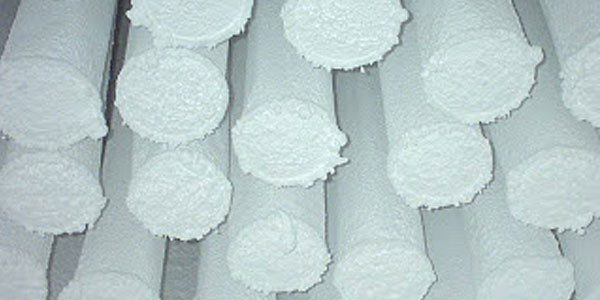

“Truth is absolute…but opinion is truth filtered through the moods… (and) the disposition of the spectator.”
- Wendell Phillips, “Idols” October 1859
Just like a good movie/book/play, every pneumatic conveying system has three parts: A beginning, a middle and an end. The beginning mixes the material and air together, the middle moves them from point A to point B and the end separates the two again and sends them each on their “Separate Ways” (Admit it you can hear Steve Perry/Journey sing it as soon as you read it).
Once separated from the material, the air needs to be filtered before being released back into the environment (if you’re reading this in Canada, we really are sorry about that whole acid rain thing. Can we get you anything? Wayne Gretzky back maybe?). The most common filter methodology used in pneumatic conveying today is a pulse-jet filter. This filter receiver type uses cloth based bags, usually felted polyester (eat your heart out Leisure Suit Larry) over a reinforcing cage. The dust catches on the outside of the fibers of the bag, while the air goes through to the other side. Over time, the dust builds and interlocks to form what is commonly called a “cake” (“Ummm…cake” – Homer Simpson).
The cake is then cleaned by a brief pulse of high pressure air. A common misconception is that the blows back through the bag to clean it again. Au contraire mon frère! The air is actually used to create a short snapping action. Since ideally the bags hang loosely on the cage, this short “SNAP” (minus the CRACKLE and POP) is much like shaking out a rug. Ideally these bursts are very short (like 1/10th of a second), sporadic (every 30 seconds or so) and only when necessary.
Over cleaning the bags creates several issues. 1) It uses energy/compressed air, 2) it shortens the life of the bags, 3) in the instant (1/10th of a second or so) the bag is being cleaned, it is actually of line. Almost all emissions that come out of a well operating baghouse, happens while it is being pulsed. If you ever see an emissions monitor for a pulse jet baghouse, it looks a lot like an EKG tape, with the spikes being every time the bags pulse.
To help aid our customers in their continuing strive to be more efficient, Smoot Co switched a few years ago to designing our filters with “Smart Timers” standard, (So when Jeff Foxworthy asks, yes, they really are smarter than a 5th Grader). Smart timers provide built in ability for differential pressure (aka “On Demand”) cleaning. Telling the cleaning mechanism to operate only when absolutely needed.
That’s the truth, the whole truth, and nothing but the truth.
So help me Jack Webb.
For more information on Bin Vents Click Here.
Submited By: Larry Eagan | Regional Sales Manager
Related Post
Revolutionizing Packaging Efficiency with Advanced Bag-Filling Equipment
How Can High-Quality Rotary Airlock Valves Elevate Your Production Line?
Why Use a Single-Source Systems Integrator Like Magnum Systems?